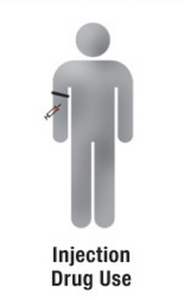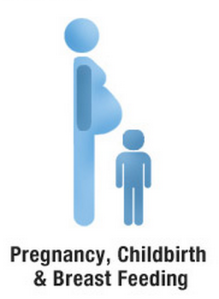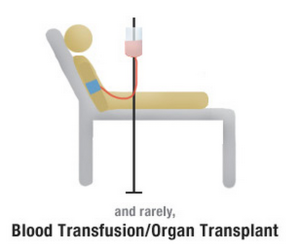HIV can be transmitted through five different ways, they are:
- Sexual contact
- Injection drug use
- Pregnancy, childbirth & breastfeeding
- Occupational exposure
- Blood transfusion/organ transplant

Sexual contact
The most common way of transmission is through sexual contact, with anal sex being the most high-risk. HIV is found in the blood, semen (cum), preseminal fluid (pre-cum), or rectal fluid of someone that is diagnosed. The ‘bottom’ has a higher risk of contracting it as the rectum’s lining is thin and may allow the virus to enter one’s system during anal sex. The ‘top’ is also at risk as the virus could enter through the opening of the penis or on small cuts, or open sores on the penis.
Vaginal sex, while not risky as anal sex, is still a high-risk for transmitting HIV. For women, the mucous membranes that line the vagina and cervix could absorb the virus, and in some cases the lining of the vagina can tear making it possible for HIV to enter the system. For men, the virus is able to enter through the urethra or any cuts/open sores on the penis.
Oral sex is the least risky when it comes to HIV transmission but it is still a possibility. The highest risk oral sex has is through fellatio and the partner ejaculates in the mouth. Factors that may increase the risk of transmitting HIV through oral sex are oral ulcers, bleeding gums, genital sores, and the presence of other sexually transmitted diseases (STDs) (which may or may not be visible).

Injection Drug Use
Sharing needles with someone who has HIV is very high-risk in transmission. Sharing drug equipment can also be a risk for spreading HIV. Infected blood can get into drug solutions by:
- Using blood-contaminated syringes to prepare drugs
- Reusing water
- Reusing bottle caps, spoons, or other containers to dissolve drugs in water and to heat drug solutions
- Reusing small pieces of cotton or cigarette filters to filter out particles that could block the needle

Pregnancy, Childbirth and Breastfeeding
A mother who is HIV-positive is able to pass on the virus to her child in three ways:
- During pregnancy
- During vaginal childbirth
- Through breastfeeding
This is referred to as “mother-to-child transmission”, “perinatal” or “vertical transmission.” There is a 25% chance that a mother could pass on the virus to her baby if they are not treated for HIV during pregnancy, labor, or delivery.

Occupational Exposure
Occupational exposure is when healthcare workers who work with those diagnosed with HIV become infected with the virus. This is an extremely rare case, but it does happen. The proper use of gloves, goggles, and safety devices to prevent injuries from sharp medical instruments, can help minimise the risk of exposure to HIV when treating those infected.

Blood Transfusion/Organ Transplant
Infection from a blood transfusion or organ transplant is extremely low. It is not possible to be infected when donating blood as blood collection procedures are extremely safe and regulated. Receiving blood also carries a very low risk in transmission as all donated blood is tested thoroughly to ensure there are no diseases. Organ donors are tested if they are HIV positive before they are approved, while these tests are very accurate they do not detect the virus in those newly infected. This can lead to some of the organ recipients become infected.
Images Credit



 Image Source:
Image Source: 



 Image Source:
Image Source: 



